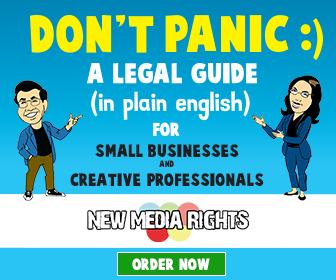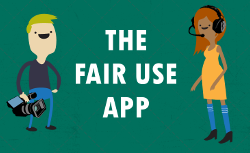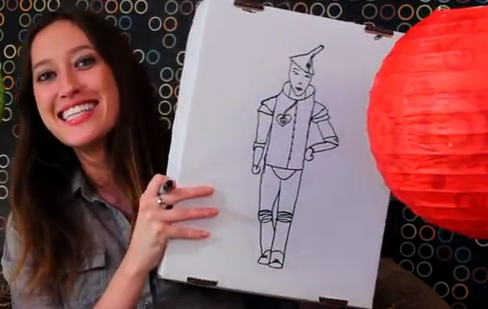Submitted by New Media Rights last modified Thu, 10/15/2015 - 2:43pm
First of all, we are experts with the DMCA, so if you have questions about the DMCA please use our contact us form to request legal services.
The DMCA takedown notice and safe harbors - how section 512 of the DMCA allows service providers protection from liability if they remove content that is claimed to be infringing by a copyright holder.
The DMCA lays out a process so that content holders can send a letter to service providers such as website hosting services and new media websites claiming that their service is hosting copyright infringing content. This is known as the Notice & Takedown safe harbor provisions (Section 512)(link to anchor in full text page)
After this introduction to the DMCA, you can also get specifics on the steps to take when responding to a DMCA section 512 takedown notice.
These DMCA takedown letters, along with copyright cease and desist letters, have been abused by content companies and bullies, who sometimes send the letters whether the claims are legitimate or not. DMCA takedown letters are a result of a debate in the mid 1990's between content companies and ISPs such AOL, Yahoo, etc. Content companies wanted ISPs to filter and pre-approve content to guard against the possibility of copyright infringement. ISPs said filtering was impossible with the sheer amount of data, so the process of sending a letter to the service provider was adopted. Again, this process, along with copyright cease and desist letters, can be abused to silence legitimate speech. (As an example of copyright cease and desist letter abuse, New Media Rights helped repel threats by Metro-Goldwyn-Meyer Studios (MGM) to Utility Consumers' Action Network (UCAN), when MGM threatened to sue UCAN over a parody of MGM's trademark.)
There are 4 categories of providers, and, each must respond to a takedown notice as detailed in the DMCA. The categories include the following:
*The most important category with regards to many new media services and web sites is the hosting services category, which originally targeted mostly web hosting services and focused on websites, but now also covers many Web 2.0 services, including blogs, podcasts, social media sites such as video, audio, and image sharing sites(Youtube, Flickr, Last.fm), etc.
Other categories include
- Simple conduits - Service providers that get you on the Internet, or simply pass the data to you
- Services who cache information temporarily for users
- Information location services - Search engines or websites that that provide links to other services
Section 512 safe harbors are really set up to protect intermediaries, not necessarily the creator, but those hosting, linking to material, can take the material down and avoid copyright liability.
So how do taken notices and this safe harbor effect my own website, blog, or podcast?
512 is just as important these day to websites, blogs, and other sites that publish content from third party users, as it is for website hosting and services and internet access providers. As mentioned above, the definition of an online service provider, and scope of the safe harbors is extremely broad, including many different types of services.
- If you allow people to submit content and then you broadcast, you could benefit from, and be subject to the DMCA safe harbor and takedown procedures
-The people and websites that link into your content could also be subject to takedown notices, affecting the ability for your content to reach individuals.
How do I use the DMCA safe harbors if I my website, blog, podcast distributes others' content?
If you have policy, AND register with Copyright Office, the copyright owner MUST send you a notice under Section 512. You then have a "reasonable" amount of time. Perhaps a few days or a week. So if you have infringing content, or links to infringing content (distribution above) you're probably ok if you remove it in a week or so.
REMEMBER, the safe harbors are for content you simply host on your website, blog, podcast. You are not shielded from any copyright claims on content you yourself create.
What do I do if I receive notice as a web service to take down content?
The reality is you have the choice of whether to remove the content. Some ISPs are even known for their willingness to actually review the take-down claim and refuse to take something down if the use of the content appears to be legal.
Here's a list of web hosts and online service providers that have been known to actually review DMCA claims rather than simply blindly remove content(please submit others in a comment below)
Laughing Squid
Speakeasy
Ctime
blip.tv
However, many services do not engage in this review, because it is simply too expensive for them to review each piece of content they host. So if someone submits notice, to take advantage of the safe harbor, for you to ensure the DMCA is a defense for you to claims under copyright law, you must remove the content. If the creator then wants content back up, they must file a counter notice. From here, the website notifies the copyright holder and if no lawsuit is filed, the content is restored in 10 to 14 days.
What do I do if I am the creator of content that is taken down by an ISP, a website, blog, or podcast and I think my use of the content is legal and the takedown is improper?
The good news is you have rights.
If you have website, podcast, blog, or other hosted content, and your webhost or web service gets notice, the website notifies the copyright holder and if no lawsuit is filed, the content is restored in 10 to 14 days.
Penalties for sending false DMCA notices.
If someone sends a notice, a provider may take content down. You can counter notice and you may even be able to file a counter lawsuit in the courts.
Counter notice 4 requirements - if someone notifies you that content you put up violates the DMCA
1. Physical or electronic signature
2. Identify the material complained about
3. Provide address telephone, consenting to District court where you or provider lives.
4. Good faith belief that content moved as a result of mistake or misidentification, thought posting was legal,
Simply identify the material, yourself, state that you are willing to be part of court proceeding, that the material should stay up, and that it was a mistake to take it down. Sign your name, send it back to your ISP or the web service that took the content down. Some websites now have automated processes for DMCA counternotice.




